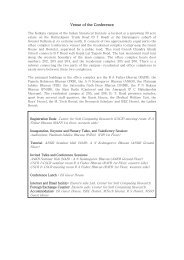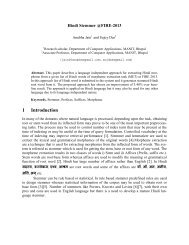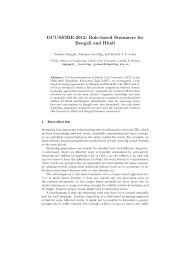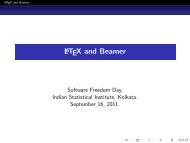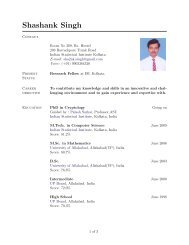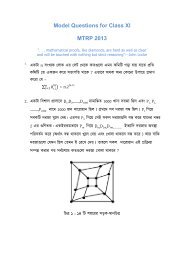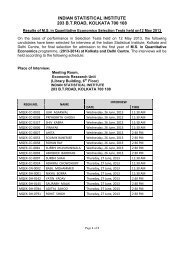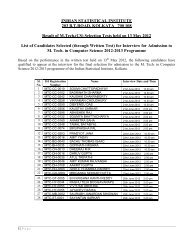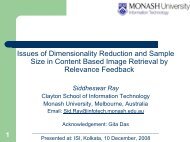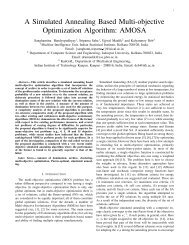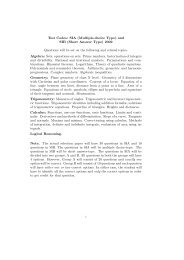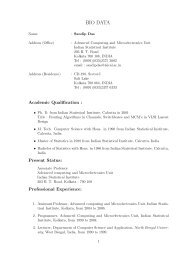Test Codes: SIA (Multiple Choice Type) and SIB (Short Answer Type ...
Test Codes: SIA (Multiple Choice Type) and SIB (Short Answer Type ...
Test Codes: SIA (Multiple Choice Type) and SIB (Short Answer Type ...
You also want an ePaper? Increase the reach of your titles
YUMPU automatically turns print PDFs into web optimized ePapers that Google loves.
(A) ∫ b0 2x[f(b) − f(x)]dx (B) ∫ b02x[F (b) − F (x)]dx(C) ∫ b b 3 −x 30 3g(x)dx * (D) ∫ ( )b b 30 3 − x2 g(x)dx13. Let f be the function f(x) = cos x − 1 + x22 . Then(A) f(x 0 ) = 0 for some x 0 > 0,(B) f(x 0 ) = 0 for some x 0 < 0,(C) f(x) is an increasing function on the interval (−∞, 0] <strong>and</strong> decreasingon the interval [0, ∞),(D) f(x) is a decreasing function on the interval (−∞, 0] <strong>and</strong> increasingon the interval [0, ∞). *14. Let P, Q, R <strong>and</strong> S be four statements such that if P is true then Q istrue, if Q is true then R is true <strong>and</strong> if S is true then at least one of Q<strong>and</strong> R is false. It then follows that(A) if S is false, then both Q <strong>and</strong> R are true.(B) if at least one of Q <strong>and</strong> R is true, then S is false.(C) if P is true, then S is false *(D) if S is true, then both P <strong>and</strong> Q are false. *15. If cos B cos C + sin B sin C sin 2 A = 1, then △ABC is(A) isosceles, but not equilateral * (B) right angled *(C) equilateral(D) scalene16. LetThen1 2 + 2 2 + · · · + n 2α = limn→∞ n 3 ,(1 3 − 1 2 ) + (2 3 − 2 2 ) + · · · + (n 3 − n 2 )β = limn→∞n 4 .(A) α = β, (B) α < β, (C) 4α = 3β, (D) 3α = 4β.17. Let x 1 , x 2 , . . . , x 100 be hundred integers such that the sum of any fiveof them is 20. Then(A) the largest x i equals 7.(B) the smallest x i equals 3.(C) x 17 = x 83 . *(D) the average of all the numbers is 4. *18. Let x be a positive real number. Then(A) x 2 + π 2 + x 2π > xπ + (x + π)x π . *13



